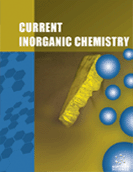Abstract
Under anoxic conditions, a novel nanoparticulate green rust with carbonate (nano GR) was synthesised by the addition of methanol to degassed switchable ionic liquid (SWIL) solution composed of 1-hexanol, diazabicycloundec- 7-ene (DBU), CO2 and Fe(C2H3O2)2. Variable temperature Mössbauer spectroscopy studies indicated the product to be predominantly GR while transmission electron microscopy selected area diffraction confirmed it was nanoparticulate in nature. Experiments with and without methanol in the SWIL medium suggest that methanol may be responsible for the Fe(II) oxidation to Fe(III) necessary for GR formation. Studies with Ar instead of CO2 trigger gas indicated that CO2 is essential for GR formation. Conditions to generate CO32- anions were most likely provided by the basic environment of the medium. The nano GR suspension was very reactive and instantaneously oxidised completely to a reddish brown precipitate upon exposure to ambient atmosphere. The nature of the oxidised product is not certain. The oxidised product, however, appears to be a mix of ferric green rust [GR(CO32-*); major] and ferrihydrite- like mineral. To our knowledge, this is the first a) example of synthetic nanoparticulate GR, and b) report of use of environmentally friendly SWIL reagents to synthesise GR materials.
Keywords: Ferric green rust, green rust, Mössbauer spectroscopy, switchable ionic liquid (SWIL).
 13
13

